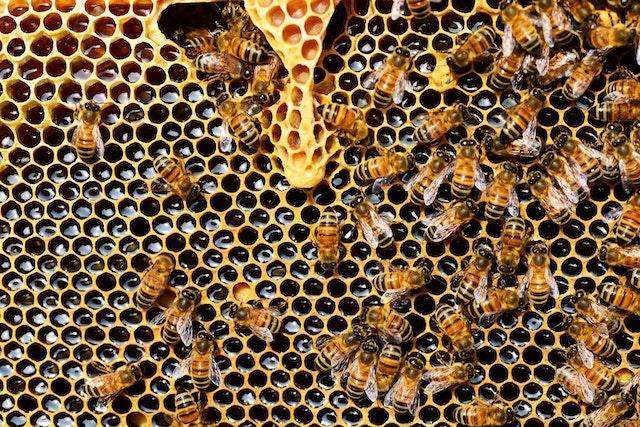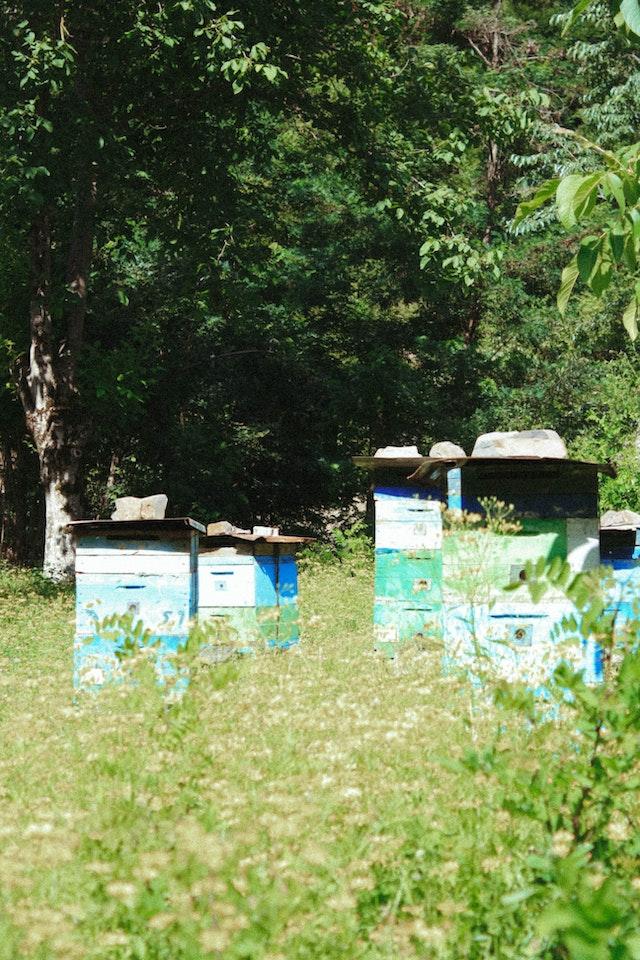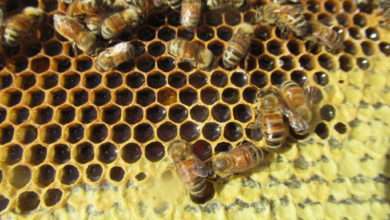How to Set Up an Apiary (Bee Yard)

It is time to consider a suitable location for your hives after you decide to become a beekeeper. Learn how to build an apiary so that you may keep bees. Before the arrival of the bees, this should be completed.
While the beekeeper’s comfort is crucial, the requirements of the bees must come first. Hives can be moved, but it is advisable to pick a permanent location upfront.
Setting Up an Apiary for Your Bees
Let’s begin by getting familiar with some beekeeping terms. A place with beehives is referred to as a “bee yard” by beekeepers. The formal name for the location of your hives, nevertheless, is “apiary.” A well-planned bee yard or apiary makes life easier whether you have 1 hive or 100.
It is simple to get wrapped up in getting bees and purchasing equipment that we lose sight of where all of this material is supposed to go. A bee yard’s overall design and the positioning of each individual hive are both parts of the setup process.
Although it can seem like a minor concern, it is very significant. Without access to the hives for management needs, it is difficult to be a good beekeeper.
Bee Apiary Designs
Even while having a blueprint for the ideal apiary design might be useful, most beekeepers would not be able to use it. We must all overcome various obstacles. The majority of beekeepers do not have access to big, limitless fields.
Instead, when choosing the optimum place for our hives, we must take into account local neighbors, play spaces, rounds, and even our own homes.
A well-designed apiary offers a healthy, secure environment for the bees and is convenient for the beekeeper to access in all weather.

Apiary Must Be Accessible.
Beekeeping involves almost exclusively heavy labor. Decide on a convenient site for your bee yard. Even in snowy or slushy conditions, you need to be able to access your hives with a truck or wheelbarrow.
To safeguard your bees, move the hives further away from the road if your city uses truck-mounted mosquito spraying.
Protect Your Bees from Predators
I have heard beekeepers claim time and time again that they have never seen bears in their region. Then, when they wake up, their hives are gone. Hives are a draw for black bears, who will destroy them. If the bear has previously had access to hives, this is especially true.
Although the bear will undoubtedly approach your back door, it is a good idea to maintain hives farther from the tree line in bear country. Preventing damage from occurring in the first place is the best strategy for handling a bear. A bear that is committed cannot easily be stopped.
The most popular bear deterrent in my area is an electric fence. When determining how to put up a bee yard, those of us who live in “bear territory” must consider this fact.
Wind Breaks or Privacy Screens
It might be a good idea to shield the hives from the view of the neighbors in a tiny bee yard. It is typical to place a towering decorative fence a few feet away from the beehives.
Bees depart the hive and fly upward and outside into the world. The fence alters the bees’ flight route and hides the hives from view. The bees’ flight paths are outside of our control. But when they initially leave the hive, we have some control. A constant flow of bees buzzing across a pathway can raise suspicion.
Even though you and I are really proud to raise bees, not everyone is “bee loving.” Some of your neighbors’ fears will be reduced by just putting your beehives out of sight.
Hive Placement in the Bee Yard
You must also take each colony’s specific needs into account while planning the layout of your bee yard. Your honey bee colonies’ productivity and health are greatly influenced by where you position your beehives.
Every hive needs a healthy environment to reside in. The worst place for an apiary is a low-lying, bog-like area beside a river or stream. Is the terrain level or amenable to leveling so that the hives can be securely seated?
The number of hives in an apiary typically fluctuates due to the annual population curve of a healthy colony. By the end of the summer, swarming and other factors could cause a beginner beekeeper who started out with 4 hives to end up with 8.
Overwhelming can occur in beekeepers with a surplus of hives. As a result, hives may be built in risky locations or become unhealthy, posing a threat to nearby bee populations.
Beehives come in several variations. Most beekeepers start out with just one but may eventually wish to experiment with others.
Most hive species develop vertically (such as the Langstroth Hive, Warre Hives, etc.). The space requirements for a top bar hive are different, though.
Lining Up the Hives
Beekeepers arranged their hives for years in a single, straight line. Over time, we have discovered that this apiary design is not the most beneficial for the bees.
Forager workers will stray to different hives. The hives at the endpoints of a long line of beehives usually gain from bees that are wandering.
Foragers often enter the first hive they come across when they return carrying heavy loads of nectar. Conversely, the number of hives in the center may decline significantly. Hives should be arranged in a curved arrangement rather than a straight line to prevent stop bees from straying.
Do not panic if your hives are lined up; there is no need to go outside and start moving them. There are further actions you can do to lessen wandering.
To encourage bees to make it back, I paint my colonies in various hues. To aid working foragers in getting around, perhaps a few bushes or ornaments in the bee yard are helpful.
Additionally, you may aid bees in finding their way home by using adorable, long-lasting vinyl stickers on the front of the hives.
Setting Up Your Bee Yard on Hive Stands
Hives are set up on square wooden pallets by commercial beekeepers. This enables the simultaneous lifting of numerous hives using machines. In a short amount of time, the entire bee yard can be transferred to a new place.
Hive stands are frequently used by backyard beekeepers. Several materials can be used to create hive stands. Of course, you may also buy ready-to-use commercial beehive stands. Even though I wish they were taller, these plastic ones are durable.
Beehives are raised off the ground by hive stands. This helps to protect the bottom of the hive and saves the beekeeper’s back.
Being a Good Beekeeper Neighbor
We must now discuss some essential information about beekeeping. These problems can get you into serious difficulties with your neighbors or even your significant other, who may not share your enthusiasm for bees.
It goes without saying that you should position individual hives, so they are facing away from populated areas or play areas. The bees must be able to dwell peacefully without feeling endangered by nearby humans or animals.
Bee Poop
You have never witnessed honey bee waste? You will, I suppose. Your cars will have more yellow streaks the more colonies you have in your bee yard.
One of my beekeeping pals had a displeased neighbor. Her clean laundry, which she had hung on the outdoor line, had bee feces on it, which made her angry. Four hives fronted her property and were about 30 feet away.
You most likely will not notice much of a problem if you only have a few hives. Large bee yards should be placed far from people for this reason as well, though.
Honey Bees and Swimming Pools
It is generally advised that the beekeeper offer a clean water source for the bees. Prior to the arrival of your bees, this water source should be built.
Additionally, it needs to be nearer to the hive than your neighbor’s pool. Honey bees enjoy drinking from swimming pools, and they prefer it even more if it contains salt water. Bees can be difficult to keep away from swimming pools. Try to halt it before it ever starts.
Long-Term Goals for Your Apiary
We need to keep our long-term objectives in mind when building up an apiary. The majority of beekeepers wind up with more hives than they anticipated.
Hives can be moved carefully. However, it is much better to pick a decent location and layout for the bee yard early on.
Choose the number of hives you want to keep, then make some more room. Working your colonies is considerably simpler with a well-designed bee yard.
Establish a location where you and your neighbors can live while also allowing the bees to thrive. Never fear if you decide to alter your apiary’s design in the future. Every one of us engages in it.
Setting up your bee yard is easier and is more likely to meet your demands for a longer period of time if you take the time to think about some of these difficulties.
FAQs
How Many Hives Can I Have in One Yard?
A forage shortage can result from having too many beehives in one bee yard, in addition to issues with physical space and nearby neighbors. This increases the beekeeper’s workload and, truthfully, deprives the bees of healthy food.
Most places experience periods of decreased nectar availability or even a nectar shortage. There will be more competition for food supplies if there are more bees in a given location. You have too many bees in one foraging area if you find yourself having to feed colonies at a time of year when many nectar-producing plants are in bloom.
In times of necessity, feeding bees is a good management technique. If you do not overstock your yard, your bees will be happier and healthier.
Why are Multiple Hives are Kept in One Location?
Modern bee yards, notwithstanding their excellent apiary design, are not natural. You won’t find multiple honey bee colonies coexisting nearby in the natural world.
The majority of beekeepers, however, do not have the luxury of separating each hive by at least a square mile. Additionally, it would be a logistical headache and require a lot of work to manage that many dispersed hives.
Time is money for commercial beekeepers who maintain sizable bee yards for pollination or honey production. In a few hours, they must be able to transfer hundreds of hives.
If you don’t overcrowd the yard, having several beehives in one place is not a terrible thing.
Additionally, in the event of severe food shortages, offer food for the bees.
How Far Apart to Place Hives?

My beehives are spaced apart by at least 2 ft. Not the bees, but rather myself, is the reason for this gap. If you think you won’t ever require access to a certain side of the hive, I assure you that you will.
Your beehives should be placed so that you can easily access all 4 sides. Consider the following: If you needed to lift a 50-pound box from there, could you get to all the sides?
How Much Space Does Your Apiary Require?
You will spend a lot of time here because this is where your honey bee colonies are based. Your bee yard should generally be bigger the more colonies you keep. Finding space for a few hives is simpler than finding space for twenty hives.
There are factors to take into account than merely having enough room for a hive. Will your scavenging bees bother the locals? Is there adequate space for you to work the hives?
Those of you who have numerous hives will experience some difficulties that tiny beekeepers won’t experience. There is a greater likelihood that a swarm may occur in your neighbor’s tree if there are ten beehives in your backyard.
Your line of beehives should, in general, have 10 to 30 feet of clear space surrounding it, most prominently up front.
A honey bee hive’s temperament fluctuates occasionally. You might get chased around the yard in September by those cute bees from April. It can be annoying to deal with aggressive Fall hives.
Urban beekeepers that have hives near neighbors should take extra note of this. A safe distance from your home is the best location for beehives.




